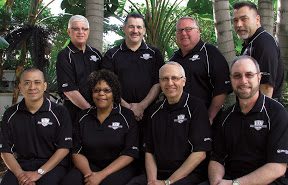Having to facilitate service-worker training for 20,000 employees across 2,000 retail locations in the United States and Canada can make the complexities of fixing a car’s transmission or an oil change seem like a walk in the park.
But the learning team at Jiffy Lube International, the automotive maintenance chain owned by global energy provider Shell, has developed a blended approach to training that has the company running along just fine.
Jiffy Lube, a 100 percent franchise system, depends on its in-store technicians’ skills to deliver consistent service to customers. The typical new hire is between ages 18 and 25. And for most of its employees, Jiffy Lube isn’t just their first job in the retail business — an industry fraught with high turnover — it’s their first job, period.
“Being able to deliver a consistent customer experience, high-quality service and vehicle maintenance and repair is obviously a challenge with that type of demographic and that type of footprint,” said Ken Barber, manager of learning and development for Jiffy Lube.
The desire to have a program that meets the needs of such a distinct employee constituency is the main reason the learning function moved away from a model of videos and face-to-face training to a Web-based ecosystem of learning and certification testing, Barber said.
Jiffy Lube’s Web-based in-store training, Jiffy Lube University (JLU), not only is effective at engaging the company’s younger demographic — thanks to its use of technology and game-like mechanisms — it provides evolving service technicians with a clear visual map for continued development, encouraging them to stay longer.
Within the first 30 days of employment, Barber said all service center employees are required to complete a Web-based training course on orientation and safety. They also have to begin online training for one position in the store.
Barber said every 30 days thereafter the new technician goes through an online training course for every in-store position. That continues for three years, Barber said, at which time the employee will have completed the company’s advanced management training.
This process is replicated in each of the franchised service centers. Barber said the ownership structure of Jiffy Lube’s service centers varies. An individual owner may operate a single location in a small town, while another owner may have a portfolio of up to 500 locations spread across the country or within a given region.
Either way, Jiffy Lube’s framework for learning is the same comprehensive, four-part blended model.
First, employees must complete the Web-based training course. “Those courses are designed with our audience of 18- to 25-year-olds in mind,” Barber said. “So it’s very interactive, there’s a great deal of visuals involved [and] a lot of video. You can see as well as hear how to perform a service.”
The second step is to pass a certification test. Employees must pass each test with a score of 80 percent to continue to the next step in the learning process.
The third step involves taking that new knowledge and applying it to the job. For this, the learning function administers a document called a Daily Training Observation Guide (DTOG).
“The DTOG becomes a dual purpose tool,” Barber said. On one hand, it is a learning tool: it breaks down, step by step, how to perform a service or job. On the other, it’s used as a scoring tool for the supervisor to measure students’ progress.
The DTOG produces three scores: “1,” “2” or “P.” One indicates the student did the step or process wrong. Two means the student performed sufficiently, but there are still areas for coaching. The final score — P — indicates the student is proficient and has completed all of the job requirements.
At that point, the manager logs a passing student’s certification in the JLU database for record keeping. In 2012, Barber said Jiffy Lube tallied more than 940,000 completed courses and earned more than 150,000 certifications.
For employees taking their development into a supervisory role, the company adds a three-day, instructor-led training course to the process. There, Barber said aspiring managers are instructed in leadership, time and financial management, and goal setting. Once completed, the final step for managers-to-be is to complete a business simulation in the JLU Web portal. The simulation presents students with challenges and questions they are likely to face in the store, as well as some less likely to arise. Decisions are linked with points, and a proper score is required to become a certified manager.
So far the approach has paid off. In the last three years, Barber said the company has seen a 33 percent improvement in the turnover rate system-wide — a mark that saves Jiffy Lube tens of millions of dollars a year in new employee training costs.
















